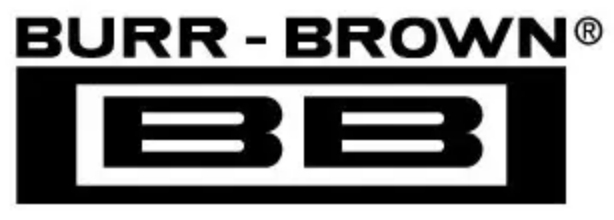THEORY OF OPERATION
The DAC1220 is a precision, high dynamic range, self-
calibrating, 20-bit, delta-sigma digital-to-analog converter.
It contains a second-order delta-sigma modulator, a first-
order switched-capacitor filter, a second-order continuous-
time post filter, a microcontroller including the Instruction,
Command and Calibration registers, a serial interface, and a
clock generator circuit.
The design topology provides low system noise and good
power-supply rejection. The modulator frequency of the
delta-sigma D/A converter is controlled by the system clock.
The DAC1220 also includes complete onboard calibration
that can correct for internal offset and gain errors.
The calibration registers are fully readable and writable.
This feature allows for system calibration. The various
settings, modes, and registers of the DAC1220 are read or
written via a synchronous serial interface. This interface
operates as an externally clocked interface.
DEFINITION OF TERMS
Differential Nonlinearity Error—The
differential
nonlinearity error is the difference between an actual step
width and the ideal value of 1 LSB. If the step width is
exactly 1 LSB, the differential nonlinearity error is zero.
A differential nonlinearity specification of less than 1 LSB
guarantees monotonicity.
Drift—The
drift is the change in a parameter over tempera-
ture.
Full-Scale Range (FSR)—This
is the magnitude of the
typical analog output voltage range which is 2 • V
REF
.
For example, when the converter is configured with a 2.5V
reference, the full-scale range is 5.0V.
Gain Error—This
error represents the difference in the
slope between the actual and ideal transfer functions.
Linearity Error—The
linearity error is the deviation of the
actual transfer function from an ideal straight line between
the data end points.
Least Significant Bit (LSB) Weight—This
is the ideal
change in voltage that the analog output will change with a
change in the digital input code of 1 LSB.
Monotonicity—Monotonicity
assures that the analog out-
put will increase or stay the same for increasing digital input
codes.
Offset Error—The
offset error is the difference between
the expected and actual output, when the output is zero. The
value is calculated from measurements made when
V
OUT
= 20mV.
Settling Time—The
settling time is the time it takes the
output to settle to its new value after the digital code has
been changed.
f
XIN
—The frequency of the crystal oscillator or CMOS-
compatible input signal at the X
IN
input of the DAC1220.
ANALOG OPERATION
The system clock is divided down to provide the sample
clock for the modulator. The sample clock is used by the
modulator to convert the multi-bit digital input into a one-bit
digital output stream. The use of a 1-bit DAC provides
inherent linearity. The digital output stream is then con-
verted into an analog signal via the 1-bit DAC and then
filtered by the 1st-order switched capacitor filter.
The output of the switched-capacitor filter feeds into the
continuous time filter. The continuous time filter uses exter-
nal capacitors connected between the C
1
, C
2
, V
REF
, and
V
OUT
pins to adjust the settling time. The connections for the
capacitors are shown in Figure 1 (C
1
connects between the
V
REF
and C
1
pins, and C
2
connects between the V
OUT
and C
2
pins).
DAC1220
V
REF
V
OUT
C
2
C
1
12
11
C
2
10
9
C
1
FIGURE 1. External Capacitor Connections.
CAPACITOR
C
1
C
2
16-BIT MODE
2.2nF
0.22nF
20-BIT MODE
10nF
3.3nF
TABLE I. External Capacitor Values.
CALIBRATION
The DAC1220 offers a self-calibration mode which auto-
matically calibrates the output offset and gain. The calibra-
tion is performed once and then normal operation is re-
sumed. In general, calibration is recommended immediately
after power-on and whenever there is a “significant” change
in the operating environment. The amount of change which
should cause a re-calibration is dependent on the applica-
tion. Where high accuracy is important, re-calibration should
be done on changes in temperature and power supply.
After a calibration has been accomplished, the Offset Cali-
bration Register (OCR) and the Full-Scale Calibration Reg-
ister (FCR) contain the results of the calibration.
Note that the values in the calibration registers will vary
from configuration-to-configuration and from part to part.
®
5

 BURR-BROWN [ BURR-BROWN CORPORATION ]
BURR-BROWN [ BURR-BROWN CORPORATION ]